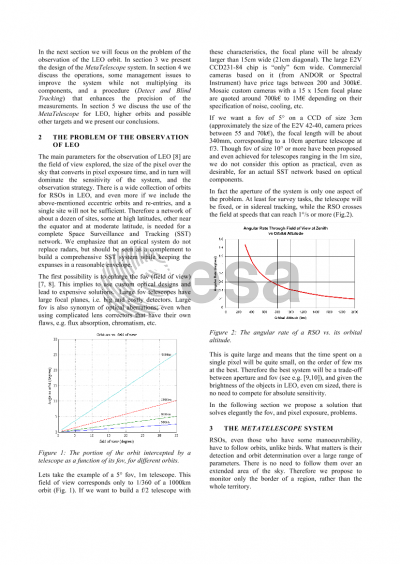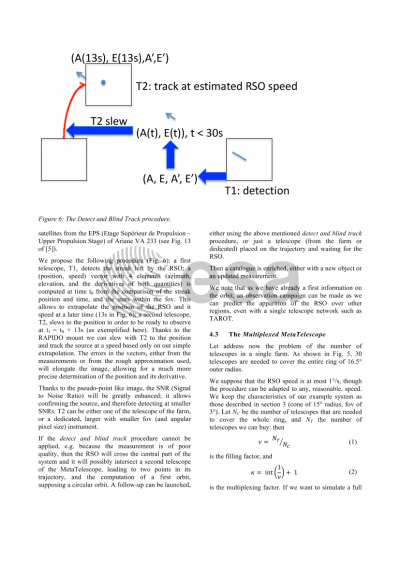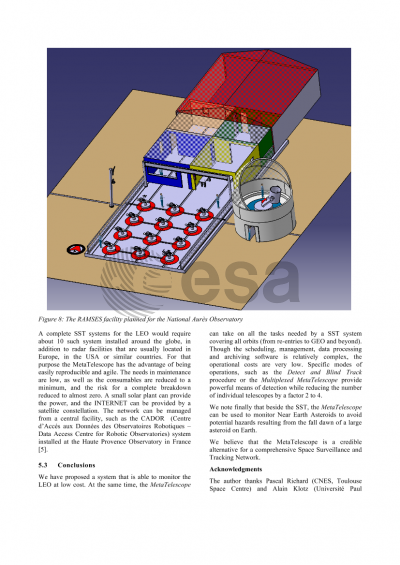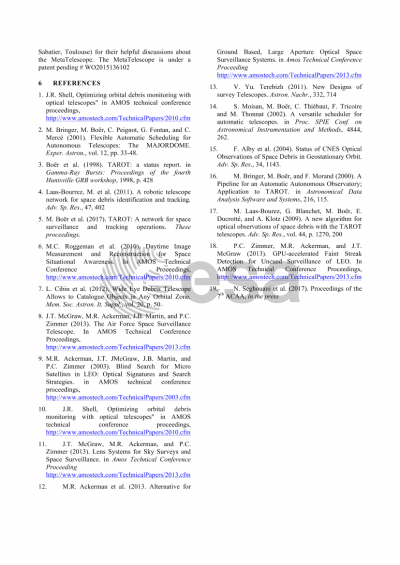Document details

Abstract
The observation of remote space objects (RSO) by optical means that are on LEO, or even re-entry of RSOs is interesting for several reasons: 1) optical telescopes, even moderate in aperture, are sensitive enough to catch RSO in the cm range, 2) high angular precision can be achieved, 3) use of filters, or broad band spectroscopy, allows some access to the materials and physical quantities related to the RSO, or, alternatively, photometry can give some information on quantities such as the spin, and 4) optical telescopes can be cheap, at least relatively compared to radar and lidar facilities. However, optical telescopes have a moderate field of view, especially when one wants to go to large apertures. Designing a telescope with a very large field of view, even 10° (which is small compared to a radar beam), can be difficult, expensive, and leads to very large focal plane area, and non-ideal response function. Though the problem for the illumination by the Sun cannot be resolved for optical telescopes, they can be used as a complement to large radar facilities, as they can be spread around the Earth. We propose a method (patent under review), called the MetaTelescope, which uses a set of several moderate apertures, moderate field of view instruments, which is able to survey a very wide field of view for objects in non-geostationary orbits, especially LEO. With a dozen telescopes with a fov of the order of 2-3 degrees, areas as wide as 800 sq. deg. can be surveyed thanks to the MetaTelescope. In addition, as soon as an object is detected, it can be followed and studied with high precision. The system can be cheap and made robust. It is easily expandable, duplicable, and with low maintenance. As it can be robotized, a network of MetaTelescope can be deployed in remote locations, even with no local support, providing a round of the Earth surveillance and tracking network. Along the night, access to GEO, and surveillance of NEOs can be achieved.
Preview










